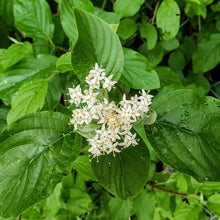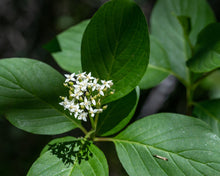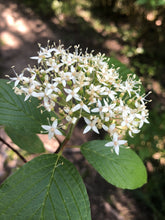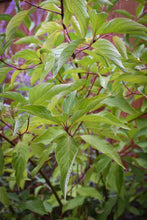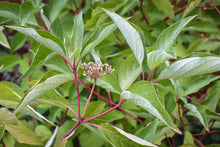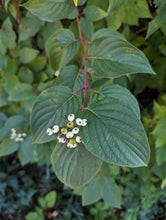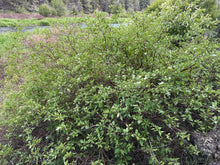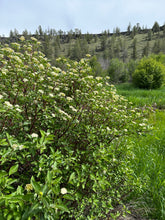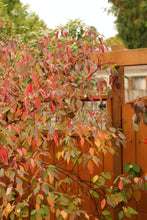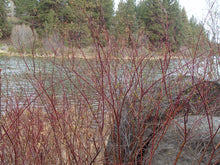
Cornus sericea
Red osier dogwood is a large, deciduous shrub with captivating year-round interest and exceptional habitat value. It's perhaps best known for its vibrant red stems that pop on even the rainiest winter days. With the arrival of spring, its soft, deep green leaves emerge, followed by clusters of creamy white flowers. By fall, the flowers transform into bright white berries that will eventually become blueish - but they rarely stay on the branches long enough since they are adored by birds such as grosbeaks, cedar waxwings, thrushes, and northern flickers. The berries contrast nicely with its autumn leaf colors, ranging from luminescent gold and soft orange to a red so deep it's almost purple.
- Plant type/canopy layer: deciduous, perennial, large shrub
- Size at maturity: 15' tall, 9-12' wide
- Light requirements: full sun, part sun/part shade
- Moisture requirements: moist to wet soil
- Bloom Time: May - August (May - July in the Portland Metro area)
- Growth rate/ease: fast growing, easy to grow
- Wildlife support: flowers attract and provide nectar to hummingbirds, adult butterflies, bees and other insect pollinators; stems and shoots are nutrient-rich foraging/browsing for elk, deer, beavers, and rabbits, especially in winter; berries are a source of food for birds; overall plant provides structure, cover, nesting habitat, and food for birds, small mammals and amphibians; it is also a caterpillar host and larval food source for native moths and butterflies including the echo blue butterfly
- Native habitat/range: commons in moist, open sites such as meadows, ponds, bogs, riparian areas and floodplains, and near shorelines, but also in open woodlands, from sea-level to 1900m, across all ecoregions of the Pacific Northwest, north to Alaska, and in much of the US as well as northern Mexico, parts of Asia and Europe. Portland Plant List - yes.
- Special features & uses: overall wildlife favorite; many ethnobotanical uses including boiled and used medicinally for coughs, colds, fevers, and diarrhea, the bark used for dye, stems for basketry, fish traps, and arrows, and the bright red branches in floral arrangements; landscape uses include raingardens and bioswales, erosion control, windbreaks and habitat hedgerows
Gardening with Red Osier Dogwood: Red osier dogwood is excellent for planting in raingardens and other water retention areas as it is extremely effective at stabilizing banks and slopes and can be occasionally inundated with water. It is long-lived, quite large and thicket-forming. It prefers sun or part sun, where it will produce more blooms, brighter colored stems and a denser form - yet it also tolerates shade. When thriving, red osier dogwood can grow very large, so it may not be appropriate for small gardens. With its size, density, and year-round interest, it functions gorgeously as a back border, screen or hedgerow in moist areas. Be sure it's planted in soil with plenty of organic matter and always let the leaves stay where they fall year after year.
Companion Plants: Good associates for red osier dogwood include Douglas fir, vine maple, gooseberries, lupine and many others.
Photo Credit 1 (flower cluster square): © machaut2, some rights reserved (CC-BY)
Photo Credit 2 (flowers and leaves): © Dominic Gentilcore, some rights reserved (CC-BY)
Photo Credit 3 (flower cluster closeup): © Erik Erbes, some rights reserved (CC-BY)
Photo Credit 4 & 5 (red stems, leaves): Tara Lemezis, Tiny Seed Photography
Photo Credit 6 (berries, leaves): © David Anderson, some rights reserved (CC-BY)
Photo Credits 7 & 8 (in the wild): © Henrik Kibak, some rights reserved (CC-BY)
Photo Credit 9 (fall leaves): Karli Del Biondo, Beetles and Bees
Photo Credit 10 (winter stems): © Tom Wainwright, some rights reserved (CC-BY)










